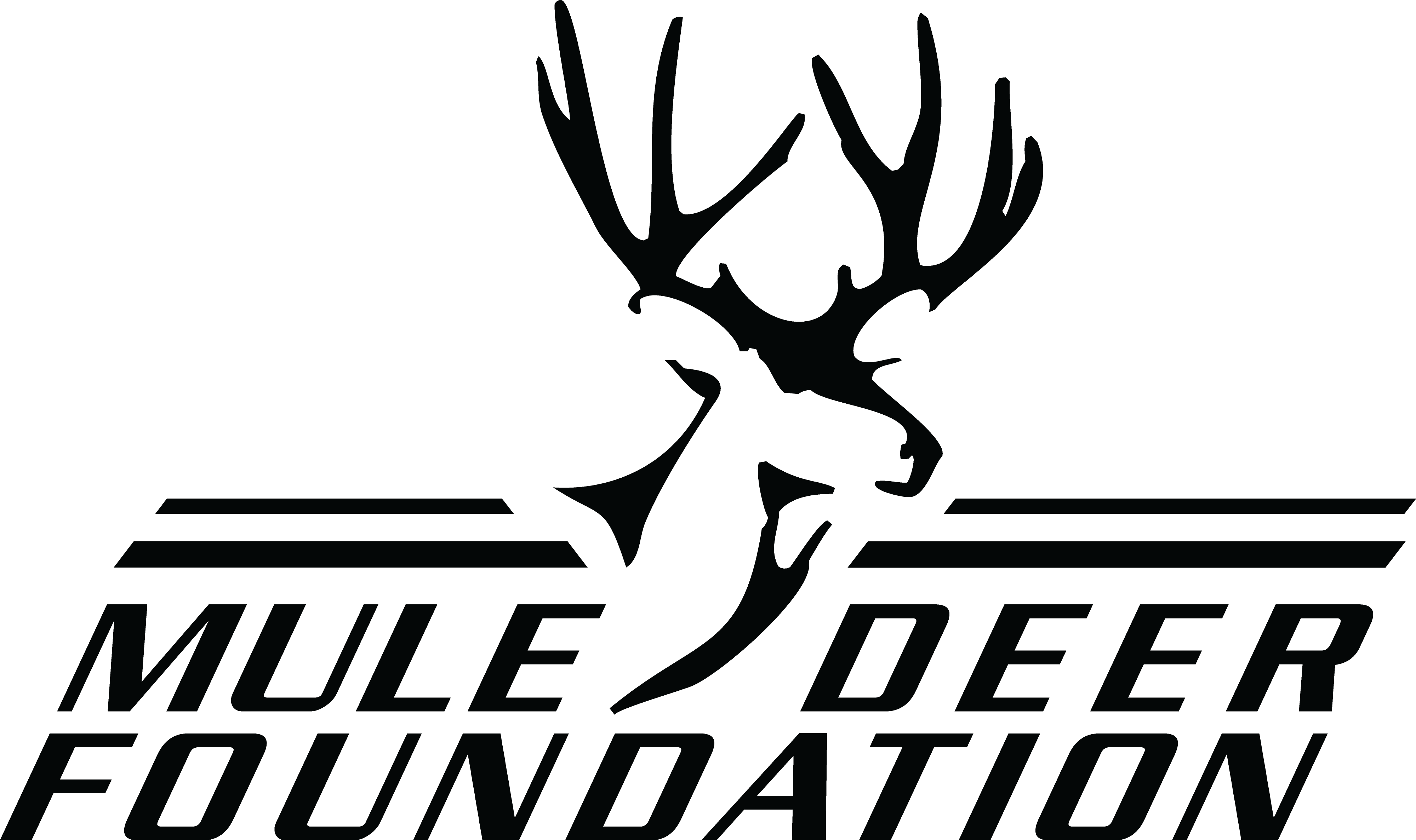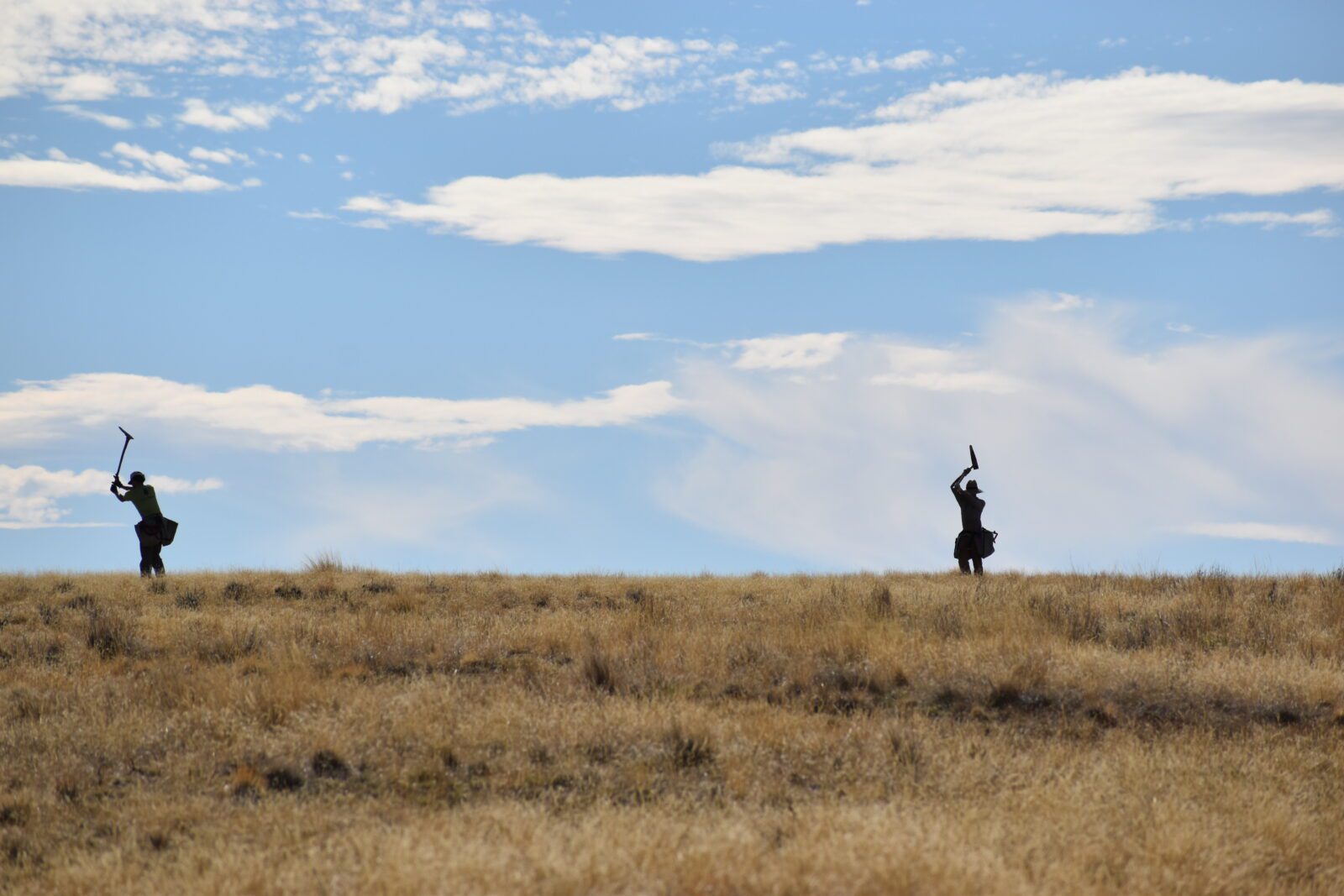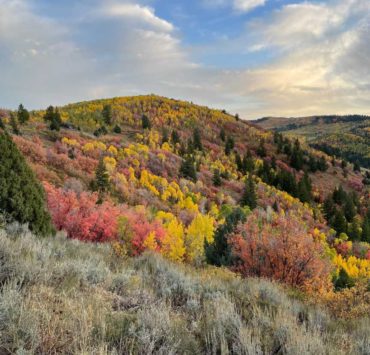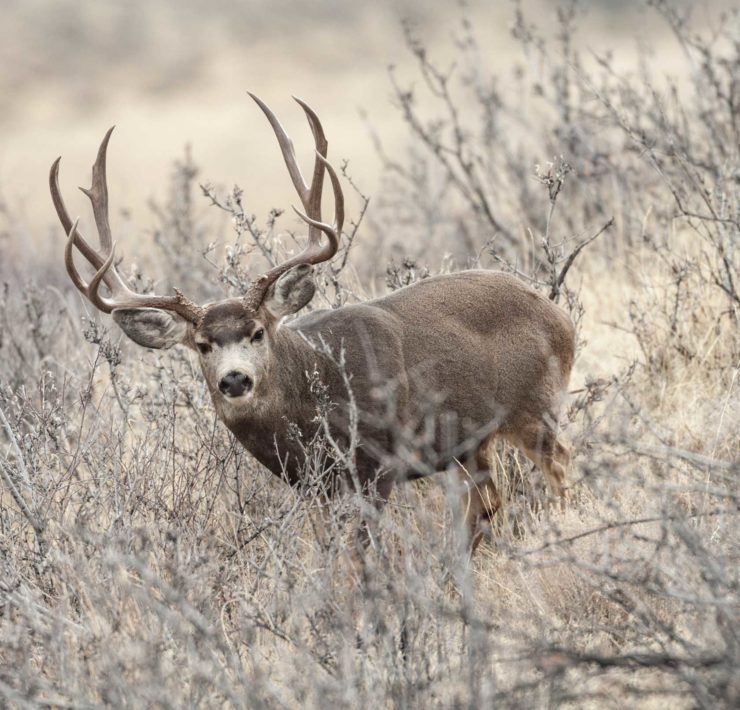The Mule Deer Foundation is the only conservation group in…
Barry Crose – Idaho&Washington Regional Director
I often get asked how the Mule Deer Foundation spends the funds raised in Idaho and if all the funds raised from a banquet stay in Idaho. Both questions were asked by new volunteers at one of my last banquets. So I thought it might be good to review some of the projects we have had in Idaho along with some of the projects that will be happening this year.
One of the awesome programs that MDF has to offer is called Chapter Rewards, which is designed to give the chapters direction over some of the funds raised at their banquet to be used for a mission-based project in their own area. What I tell new members is to look at all the funds that are put into Idaho and to view all of Idaho as their own area as we often travel to various areas throughout the state to hunt and fish.
Chapter Rewards ensures that chapters have a say in how a portion of the proceeds generated at events is used for projects important to chapter committees and the state. Funding is based on how efficient the chapter is with their event. The more efficient the event is, the more funds they will receive. These funds are crucial to the mission of MDF, and chapter involvement in identifying potential projects and supporting strategic landscape scale projects are crucial to the success of MDF at the local and state level. Chapter projects are a great way to publicize MDF’s conservation efforts to members and other wildlife organizations.
Since 2010, Idaho has spent over $724,000 on different projects in Idaho, with some funding coming through Chapter Rewards. Two of the Chapter Rewards projects supported by the Magic Valley Chapter located in Twin Falls were the Coal Bank Spring enclosure installation and the Red Rock Springs enclosure. The chapter utilized $16,950 of their chapter rewards toward the rehab of these enclosures.
Coal Bank Spring is a natural riparian system along the Coal Bank drainage that provides surface and subsurface waters, with associated saturated soil conditions throughout the year. The project goal was to protect wildlife and cultural resources from the impacts of cattle grazing, while providing access to a reliable water source for cattle and wildlife to use. The funds were used to purchase approximately 550 feet of metal jack fence to enclose Coal Bank Spring and allow the continued use by wildlife. The installation was done by Bureau of Land Management (BLM) staff and MDF volunteers.
Similar to the Coal Bank Spring enclosure install is the Red Rock Spring enclosure rehab. Red Rock Spring is located on the northeast side of Jim Sage Mountain. The area surrounding the spring is used by a variety of wildlife species including mule deer, elk, and sage grouse. Again, in partnership with the BLM, the project replaced the Red Rock Spring riparian enclosure that was completely destroyed in the 2018 Conner wildfire. This enclosure was originally constructed in 2003 using wood buck and pole material and was designed to exclude livestock from accessing the spring source and associated riparian/upland area to improve riparian health and wildlife habitat. The previous enclosure was successful in advancing the objectives and the new enclosure continues to protect the spring and habitat. It was constructed of metal buck and pole material to allow for easy access for wildlife as well as long-term durability and fire resistance. Chapter Rewards funds helped to purchase metal buck and pole material.
Some of the other Chapter Rewards projects were placement of water guzzlers, purchase of radio collars, various sagebrush and bitterbrush plantings in burned out areas, and purchase of mule deer wintering grounds to name a few. Projects MDF supported through national funding include habitat selection and fawn survival research, Highway 21 underpass funding, state highway deer/collision study, Idaho Fish and Game mule deer initiative funding, and the Blair Fire rehabilitation. This funding makes up a large portion of the three quarters of a million dollars that has been spent in Idaho since 2010.
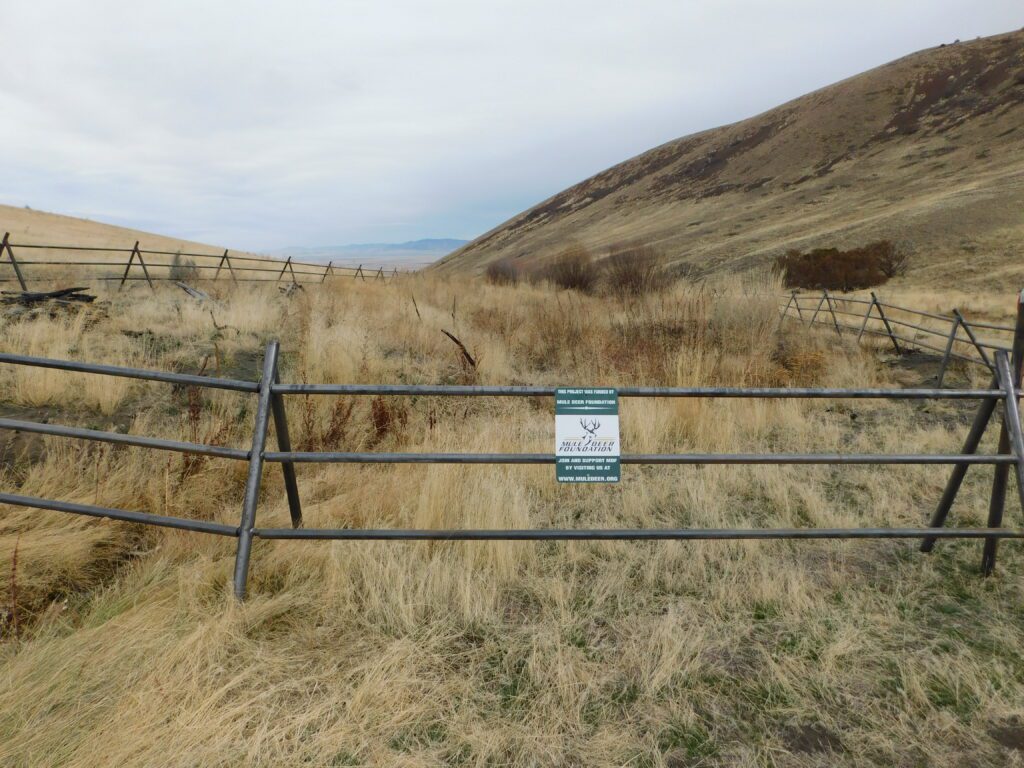
In the spring of 2020, MDF hired Jessie Shallow to be our Partner Biologist and Idaho State Action Plan Coordinator and Jessie has been very busy with a variety of projects to support mule deer migration and habitat restoration in the state. Over the next two years, Idaho will have several new projects that will impact over 20,120 acres. These projects will be done at a total cost of $1,270,000 with MDF contributions at $415,000.
One of the upcoming projects that will take place is near Malad, on the Bear Lake Plateau. This project will remove and replace 8 miles of fence with wildlife friendly fence to help the 8,000 mule deer that migrate near the property each year. The old fences were known deer killers and it has been a high priority for years to replace them. The landowners in this area are willing to convert all fences.
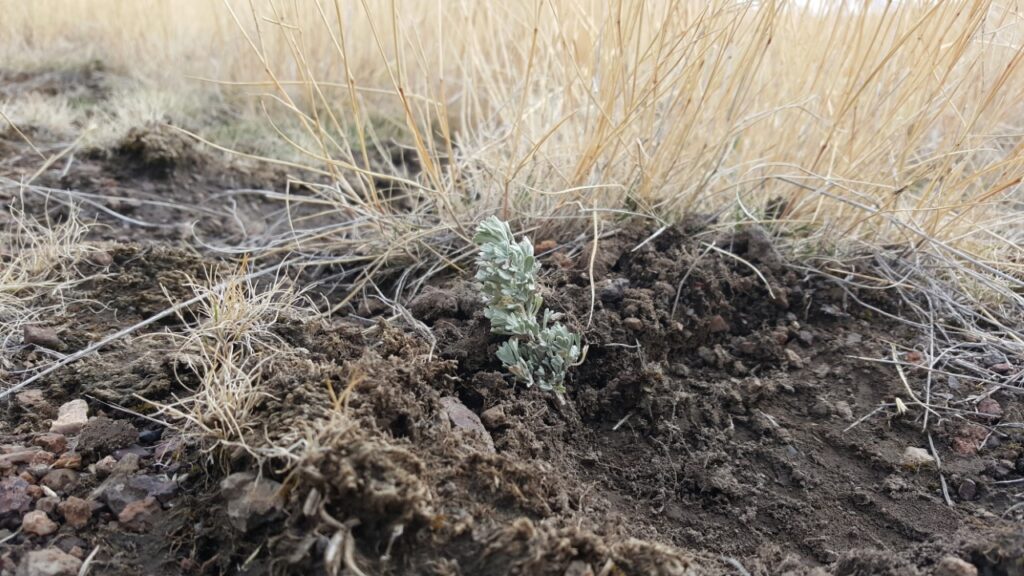
Partners on these projects include Bass Pro Shops and Cabela’s Outdoor Fund, BLM, Dallas Safari Club Foundation, Idaho Department of Fish and Game, and the National Fish and Wildlife Foundation.
In late September of 2021, MDF staff and contracted crews planted 32,000 sagebrush and bitterbrush seedlings on about 1,000 acres in the Tex Creek Wildlife Management Area to replace vegetation that a fire took out in 2018; in 2020, 40,000 sagebrush plants were put in the ground on another 1,000 acres. This area is a critical mule deer and elk winter range. Another planting project took place in early October in the Badger Mountain area south of Twin Falls adding 94,000 sagebrush plants on about 1,800 acres to replace the vegetation that was lost in a fire in 2020. Then, during the last week of October, 52,000 Wyoming big sagebrush plants were planted on about 1,500 acres in the Soda Fire burn in the Owyhee desert near the Idaho/Oregon border. In addition to the planting crew, we had two volunteers from the local Treasure Valley Chapter give their time to this project. The ground was moist from recent rains, so we are predicting a high survival rate.
The Lemhi Valley near Salmon is a priority area for migrating big game and MDF has focused several projects in the area. This fall, 900 acres were sprayed with the goal to reduce cheatgrass by 80% and enhance native vegetation in this critical winter range for mule deer and elk. Next year, additional acreage will be treated bringing the total to 3,500 restored acres. Another project will improve jump outs and public access gates in 6 miles of funnel fencing to reduce roadkill on a busy highway. This section of funnel fence has two bridges that work as wildlife underpasses to facilitate movement. In addition, MDF is working to replace 4 miles of woven wire fence with four strand wildlife friendly fence in this area to help wildlife that encounter many miles of impermeable woven-wire fences. An Eagle Scout volunteer will be making and installing sage grouse markers for the new fence as well.
MDF has also contributed to the first wildlife overpass in Idaho that is being built on Highway 21, just north of the underpass that was installed a few years ago. This overpass will help nearly 10,000 mule deer and elk that migrate across the highway annually. The Idaho Department of Transportation is leading the project and total cost is estimated at $5,467,500 with construction projected to start in the summer of 2022.
Volunteers are welcome on many of these projects. If you are willing to help, contact myself at [email protected] or Jessie Shallow at [email protected].
The Mule Deer Foundation is the only conservation group in North America dedicated to restoring, improving and protecting mule deer and black-tailed deer and their habitat, with a focus on science and program efficiency. MDF is a strong voice for hunters in access, wildlife management and conservation policy issues. MDF acknowledges regulated hunting as a viable management component and is committed to recruitment and retention of youth into the shooting sports and conservation. Get involved in your state or become a member at www.muledeer.org or call 1-888-375-3337.


